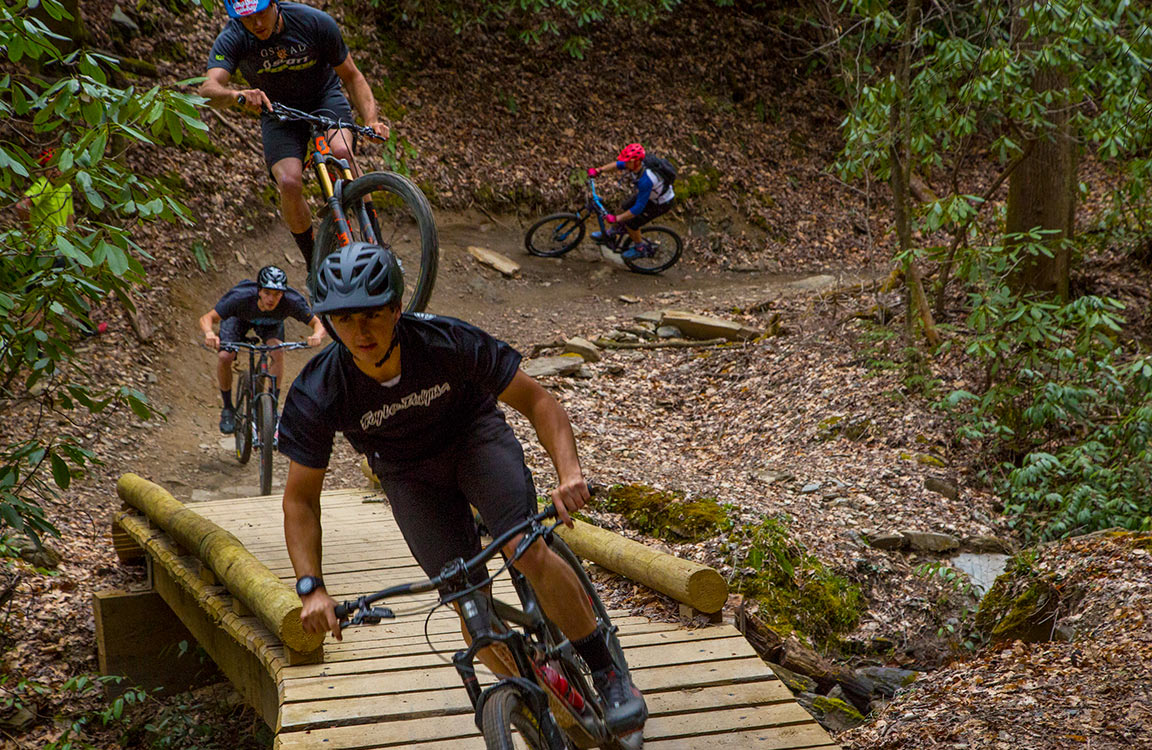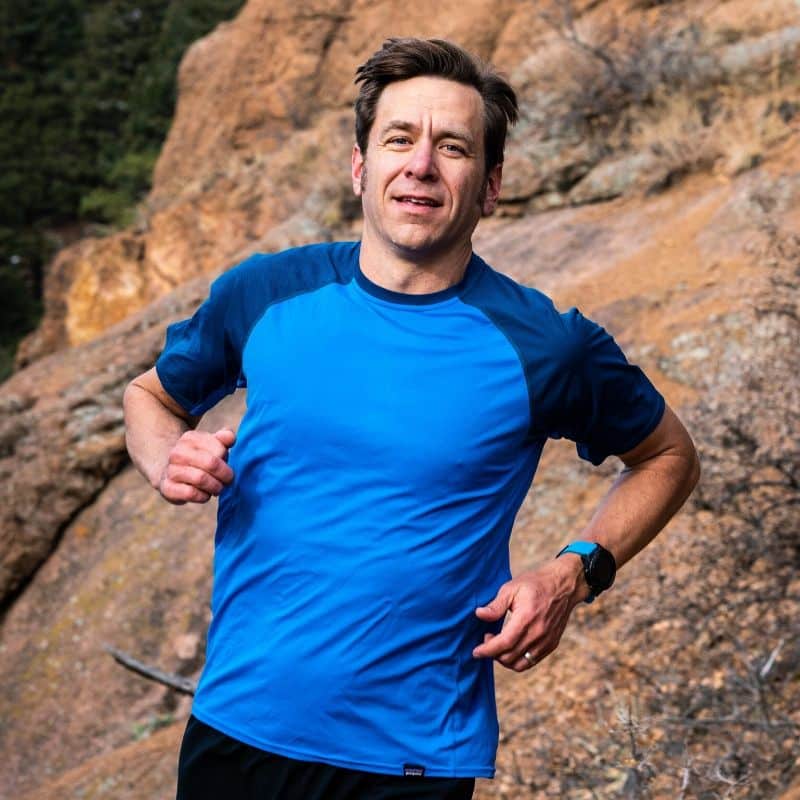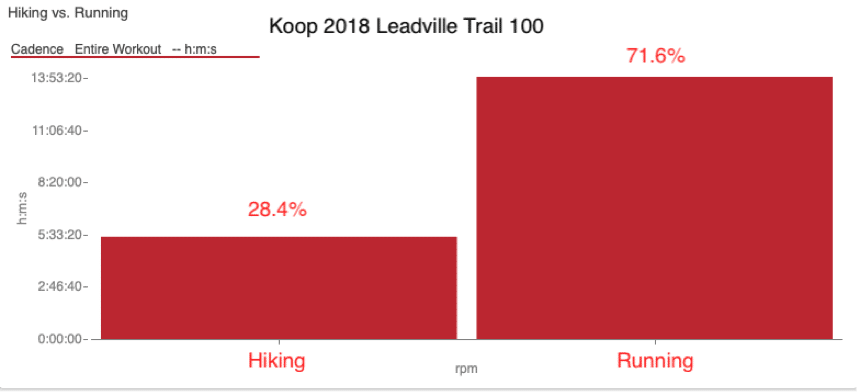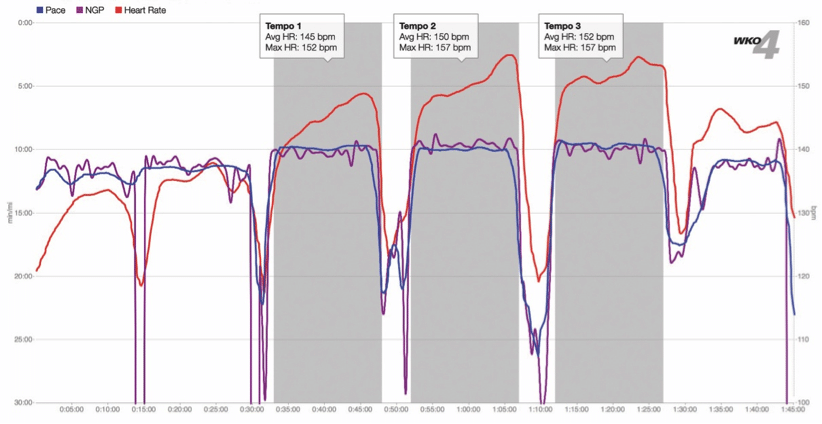
What Ultrarunners Should Learn from Cyclists, Triathletes and Mountain Bikers
By Jason Koop,
Head Coach of CTS Ultrarunning
As this year’s Tour De France is in full swing (and extremely exciting as of late, I might add), I’m reminiscent about early in my coaching career when I worked with a variety of athletes including a stable of cyclists, triathletes and mountain bikers. As a runner by trade, I was forced to have a crash course in all of these sports, including their cultures and nuances, so I could fully appreciate what the athletes were preparing for. That crash course included mentorship, copious amounts of time at the events themselves, as well as me personally strapping on a helmet and racing bikes on the road and mountain bike (little known fact, I actually rode the Leadville 100 far before I ran it), and some expert swim instruction. I carried these lessons with me and applied them where appropriate to other endurance sports, team sports and eventually ultrarunning. As irony would have it, I’ve also been criticized for having this background. That criticism I find a bit short sighted, as there are things ultrarunners can learn from all sports, particularly other endurance disciplines. With that as a background, here are things I believe ultrarunners can learn from other sports.
From the Mountain Bikers: Event demands are nuanced and varied
Mountain biking first hit my radar in 2001 as I was wrapping up my undergraduate studies at Texas A&M University. I eagerly hopped into several cross-country races and ultimately did the Leadville Trail 100 Mountain bike race. What I quickly found out, and dug up the data and research to verify, is that the sport requires specific power, cadence and torque demands. A two-hour cross country race on the east coast might look completely different from one in Colorado, based on terrain, how punchy or sustained the climbs are, and other features of the race. As coaches, we were always careful to analyze the power files of the races our athletes were doing and deconstruct the event demands.
Similarly, in ultrarunning demands vary tremendously from event to event. Relative intensity, the amount of climbing and descending, and the amount of running vs. hiking are all variable depending on the athlete, course and terrain. How much so? If you take my 2018 Leadville 100 run file for example, I spent 28.3 % time hiking and the remaining running, all on a ‘runnable’ course for respectable 19:26 finish.
I use the exact same cadence histogram to evaluate this as I did when I worked with mountain bikers. The result for athletes is you can better tailor your training to the demands of the event by looking at how much time you will hike vs. run and how intensely you can run the climbs vs. the flats. In this case, this means during training I should have spent about 25-30% of my time hiking in preparation for that event (all other variables being equal).
From the Triathletes: Intensity matters in long events.
One of my colleagues worked with 3-time Ironman World Champion Craig Alexander (aka ‘Crowie’) as he made the transition from 70.3 events to the Ironman. For context, Crowie was moving from a discipline with a typical winning time of under four hours, up to one that would be won in over eight. It would have been very easy for his coach to simply say, “You are going to be swimming, cycling and running over twice as long, let’s just pack on the mileage.” Fortunately for Crowie, his coach was smarter than that and continued to include high intensity intervals, including VO2max work, during Craig’s preparation.
Ultrarunners have fallen into the same trap time and again. They think that just because they are moving up in distance, training intensity should fall by the wayside as a compromise for the increase in volume. While volume does matter, it is still important for ultrarunners to do high intensity work, including VO2 max work, at strategic points in training. Even for runners who are training for the 200-mile distance, I still incorporate high intensity interval training early in the season.
From the cyclists: There’s a better way to determine intensity
Out of all of the different endurance disciplines, cyclists have the best training tool: the cycling power meter. One of my most informative periods as a young coach was in the early 2000’s when everyday cyclists started steering away from heart rate based training and toward power based training. In many ways, we (the coaches) looked like idiots. From one day to the next, we went from prescribing a workout (say 3X10 min Tempo with 5 min recovery) by HR to prescribing the workout by Power. This quickly exposed the flaw inherent with cardiac drift and caused athletes to collectively bemoan ‘What the heck? Have I been doing it wrong all these years?’. The graph below illustrates this point perfectly.
► Free Ultrarunning Training Assessment Quiz
Take our free 2-minute quiz to discover how effective your training is and get recommendations for how you can improve.
What you see is an evenly paced 3X10 min Tempo workout done on a track. The athlete was instructed to maintain the same pace for each of the intervals indicated by the blue line. As the intervals progress, the heart rate creeps gradually upwards, even though the pace remains the same. The athlete can obviously do the workout. But, if I were to have prescribed this by heart rate, the athlete’s pace would have had to decrease with each interval. When interval training with heart rate, an athlete will almost always perform the series of intervals at a lower intensity as the session goes along. They can do more, get in a more consistent and effective workout, but using a heart rate range quite literally acts as a governor on their system.
Enjoying This Article? Get More Free Running Training Tips
Get our coaches' best training advice, delivered straight to your inbox weekly.
What ultrarunners can learn from this is that there is a better way to determine intensity than heart rate. No, it’s not pace. No, it’s not even a running power meter (I promise, more on that next week). It is simple Rate of Perceived Exertion (RPE). As I’ve written about before, ultrarunners should embrace RPE, as that is what you will have to rely on come race day. So much so, that if I could wave a magic wand and have a training tool equal in accuracy to a cycling power meter, for runners, I still would have runners utilize RPE simply because they will be more in tune with their bodies.
What about running powermeters?
I promise more on this next week, but as a short primer… Running power meters have emerged in the last few years attempting to be an equivalent to their cycling peers. In theory, running power could provide an alternate way of prescribing intensity (go run at 200 Watts, as opposed to heart rate or RPE) as well as training load (run for 1000 kJ, as opposed to time or miles). In addition to this, running powermeters could provide biomechanical insights to improve running economy (the rate of oxygen needed to run at a certain speed), reduce injury risk, or some other biomechanical phenomena that could be leveraged to improve performance. Do they work for trail or ultrarunners? You’ll have to tune in next week to see.
References
- Hays, A., Devys, S., Bertin, D., Marquet, L. A., & Brisswalter, J. (2018). Understanding the Physiological Requirements of the Mountain Bike Cross-Country Olympic Race Format. Frontiers in physiology, 9, 1062. doi:10.3389/fphys.2018.01062
- Impellizzeri F. M., Marcora S. M. (2007). The physiology of mountain biking. Sports Med.37 59–71. 10.2165/00007256-200737010-00005




Comments 5
Aurogra 100mg contains sildenafil citrate dynamic Ingredients which improves erectile dysfunction. Erectile dysfunction can happen for many reasons. Take this medicine in the dose as suggested by your healthcare provider
aurogra 100 Aurogra 100 mg is content of Sildenafil Citrate which is use to treat Erectile Problem in Men. it’s also known as Generic Viagra and Manufacture by Aurochem Laboratories. Free Shipping with Best Online Price.
Buy Cenforce 100 Mg If you and your s** life have gone into the murky dens because of erectile dysfunction (ED), all you need is Cenforce 100 Mg to get the bright light into your dilapidating relationship. All you have to do is thank Sildenafil for erecting your pe**s.
Pingback: Ultramarathon Runners' Toolkit for Monitoring Training - Jason Koop
SUPER KAMAGRA dual impact at one dose. By its unique fusion of Sildenafil and Dapoxetine, it assists medical attention against erectile dysfunction (ED) and premature ejaculation (PE) in men